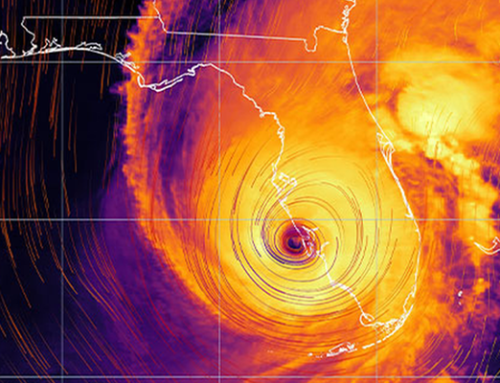Starting the New Year with an IRS letter in your mailbox? Just what you wanted to kick off 2022! But don’t worry — the IRS is not auditing you or sending you a bill. This time, it’s good news. Starting in late December, the IRS will send letters detailing the payments you received from the Third Economic Impact Payment (EIP) and the Advanced Child Tax Credit (CTC). The Third EIP information will be in Letter 6475. The Advanced CTC information will be called Letter 6419. When you receive the letters, store them with your 2021 tax documents. You will need them for completing your individual 2021 tax return, which is due by April 18, 2022.
Economic Impact Payment
The EIP was an economic stimulus payment authorized by the American Rescue Plan Act of March 2021. It was disbursed between March and December 2021. The payment equaled $1,400 for each eligible taxpayer plus $1,400 for each qualifying dependent. If a taxpayer’s adjusted gross income (AGI) is over $150,000 (married filing jointly) / $75,000 (single), the payment was reduced. For AGI over $160,000 / $80,000, there was no payment. You may also have received a “plus-up” payment if the IRS sent your original payment before you filed your 2020 tax return and your 2020 return showed additional eligibility. The EIP is not taxable, but you will need to reconcile the amount you received and the amount you are eligible for. The Letter 6475 is the IRS’s record of what they paid you. If you didn’t receive the right amount, it will follow the same pattern as the first two EIPs in 2020. That is, if you received less than the amount you qualified for, you can get the additional money when you file your 2021 tax return. If it shows that you received too much, you do not need to pay back the difference and the extra money will not be considered taxable income when you calculate your tax liability.
Advanced Child Tax Credit
The Advanced Child Tax Credit was a series of six monthly payments from July to December 2021. They totaled 50% of the Child Tax Credit the IRS estimated for each qualifying child on a taxpayer’s tax return. For 2021, the full CTC is $3,600 for children ages 5 and under at the end of 2021, and $3,000 for children ages 6 to 17. (That’s up from $2,000 for all children in 2020.) Like the EIP, the credit is reduced at higher incomes. Taxpayers with an AGI over $150,000 / $75,000 can see the credit reduced to $2,000. Taxpayers with an AGI over $400,000 / $200,000 can see it reduced to zero. The Advanced CTC, which is half of the full credit, could be up to $1,800 per child, spread over six payments, and also split between parents or guardians with joint custody. Taxpayers were able to opt out of payments not yet received and even able to return uncashed checks to the IRS. So some people may have received a partial Advanced CTC. The IRS letter will be especially important for the Advanced CTC payments because many taxpayers will struggle to track the total payments they received. One simple problem is that people deposit more than one check at a time but bank statements only show the total. You might not remember the amount of each check. Worse, the IRS’s payments were not always predictable. Here is an example of how one married couple I know, with one eligible child between 6 and 17, received their payments. With the one eligible child, their CTC is $3,000, and so the advanced payments should total $1,500. Here’s what happened:
- July: a single check for $250 was mailed to the husband and wife.
After receiving the check, the husband signed up for direct deposit on the IRS website. The wife did not.
- August: a direct deposit of $250 was deposited to the couple’s joint bank account.
- September: a direct deposit of $157 was deposited to the bank account and a check for $157 was mailed to the wife.
The wife then received a letter from the IRS stating that the $157 amount was incorrect and future payments would be adjusted. The husband did not receive a letter.
- October: a direct deposit for $115 and a check for $115.
- November: a direct deposit of $114 and a check for $114.
- December: a direct deposit for $115 and a check for $115.
In the end, the couple received the $1,500 they qualified for. However, without careful recordkeeping, that total would be hard to reconstruct. Taxpayers can see the history of what the IRS paid here: https://www.irs.gov/credits-deductions/child-tax-credit-update-portal. It is important to verify the payments with the taxpayer’s records as well if possible and to reconcile the total to the Letter 6419 they will receive in January. As with the EIP, if you did not receive the amount you qualified for, you can claim the balance on your 2021 tax return. However, unlike the EIP, if you received too much, you may need to repay the excess, depending on your 2021 modified AGI. (AGI is only modified by adding some income from foreign or U.S. Territory sources.) If your modified AGI is over $60,000 / $40,000, you will likely need to repay at least part of the excess. Repayments could be substantial if the IRS thought you had more qualifying children than you have. In addition, be prepared for how the advanced payments will affect your 2021 tax refund. The 2021 CTC is fully refundable. If your credit is more than your tax, you get the difference as a tax refund. However, if you received all the Advanced CTC payments, the credit on your tax return will only be half of what you might have expected — since you already received half of the credit. You might receive a refund less than you expected, or owe more than you expected. With all these complexities, it is important that you keep the letters you receive from the IRS and compare them to your records. Being prepared now will make filing your 2021 tax returns much easier.





